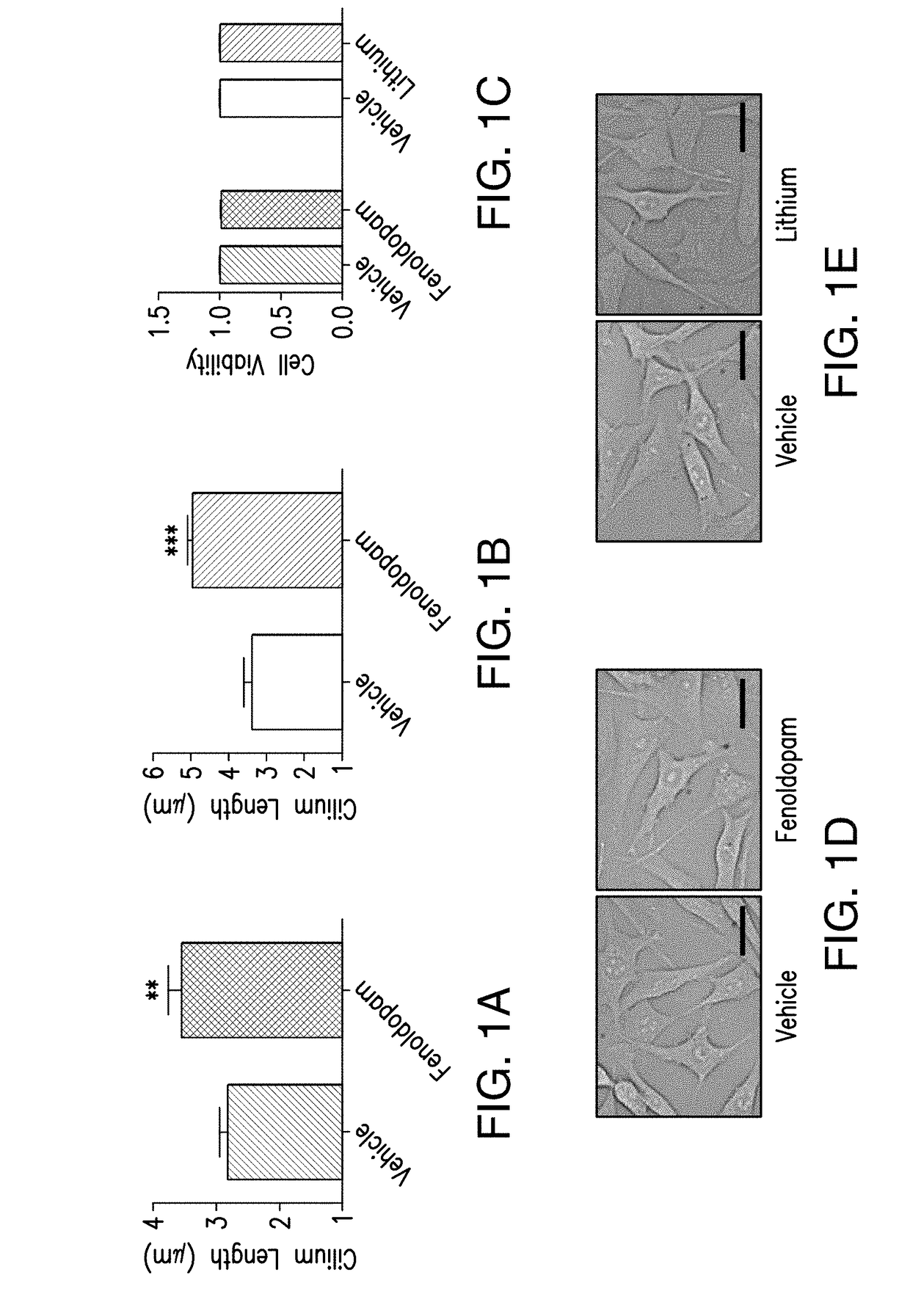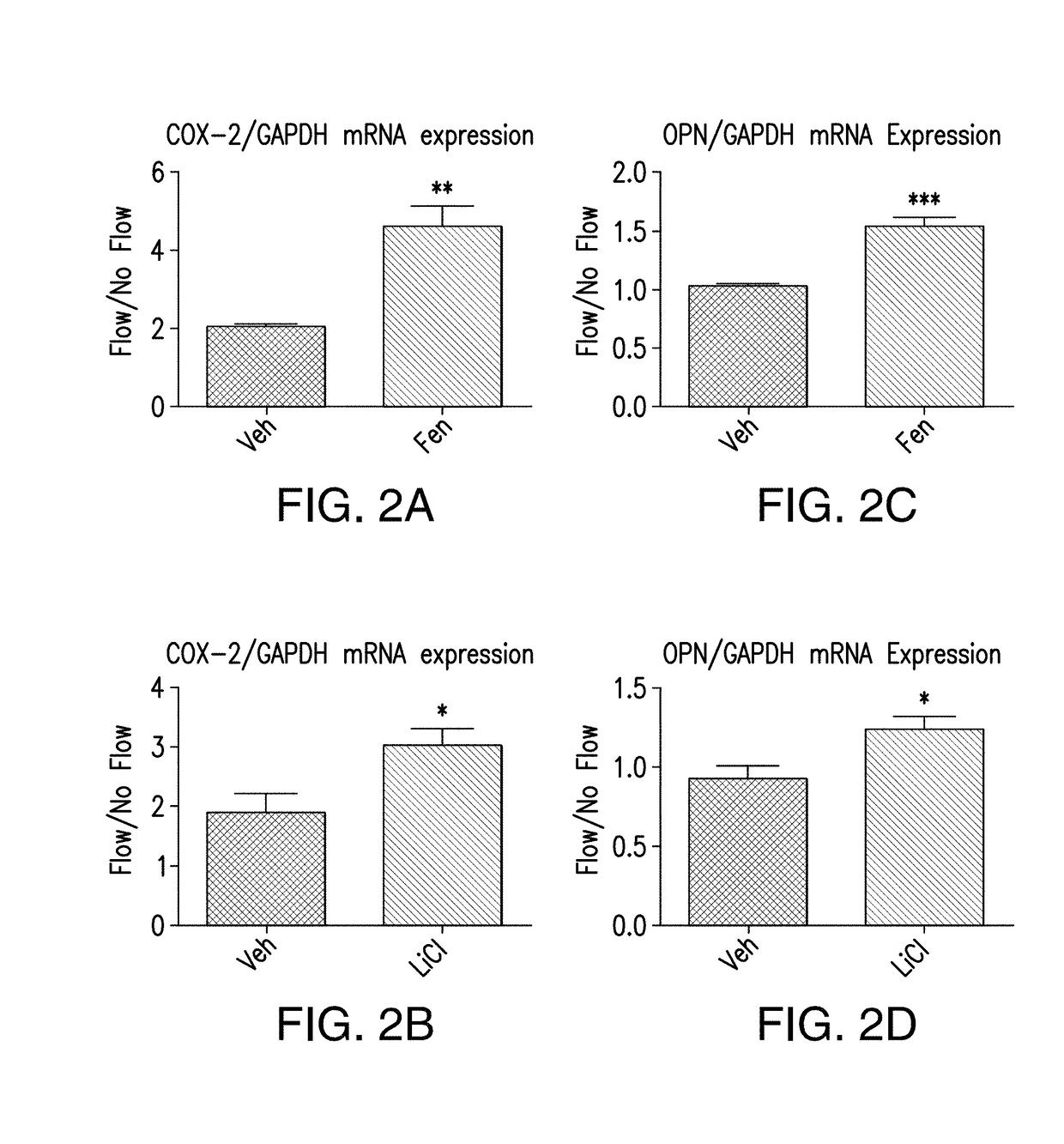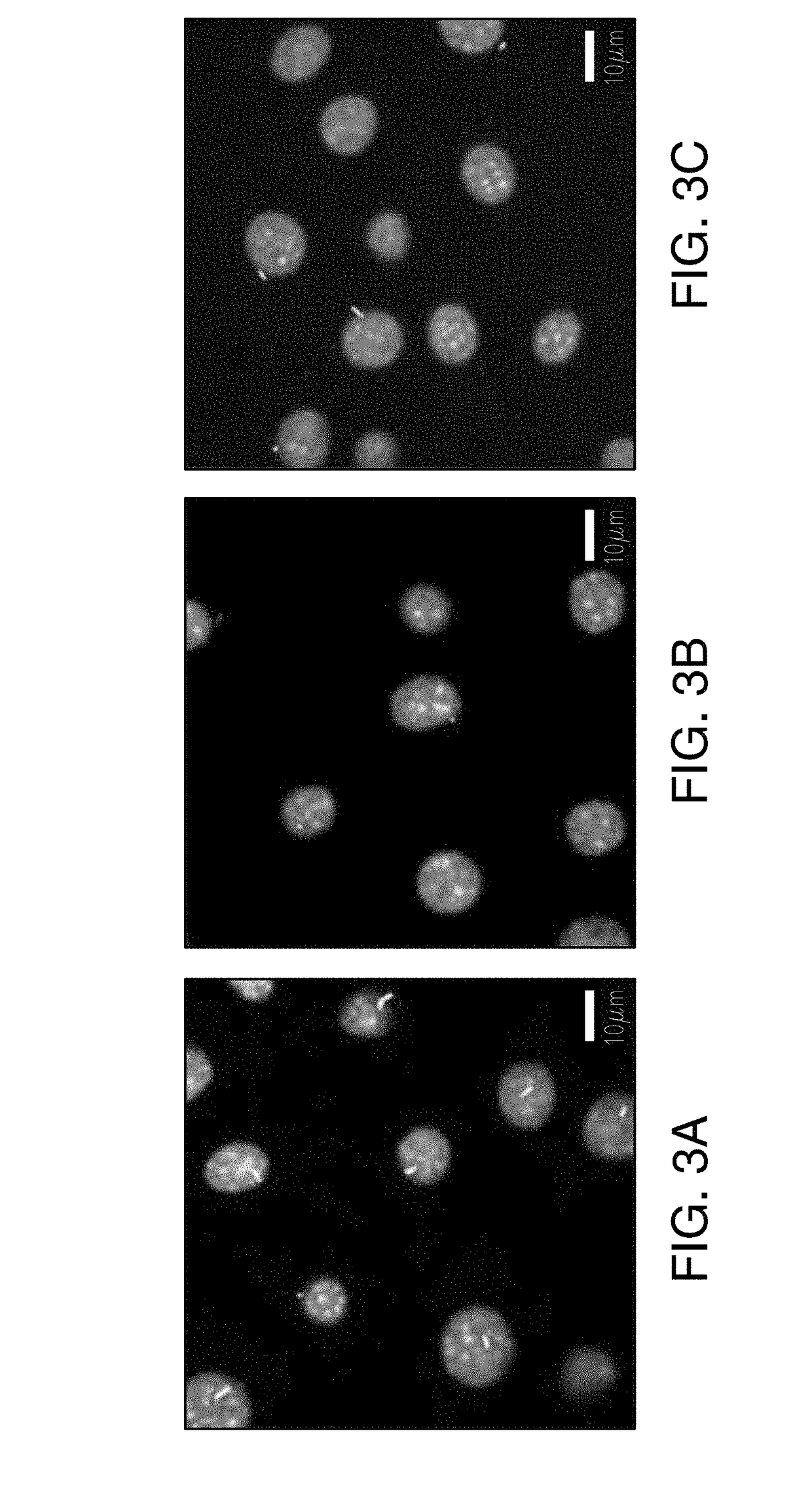Regulation of gene expression by modulating primary cilia length
a technology of primary cilia and gene expression, which is applied in the direction of heterocyclic compound active ingredients, organic active ingredients, drug compositions, etc., can solve the problems of not discounting potential, and achieve the effects of increasing osteogenesis, increasing mechanosensitivity of cells, and increasing osteogenesis
- Summary
- Abstract
- Description
- Claims
- Application Information
AI Technical Summary
Benefits of technology
Problems solved by technology
Method used
Image
Examples
example 1
ng Primary Cilia Enhances Cellular Mechanosensitivity
[0182]Osteocytes are mechanosensitive cells within bone, where the primary cilium functions as a mechanosensor in this context (Malone et al., 2007). In vitro, fluid flow mechanical stimulation of osteocytes enhances expression of the osteogenic genes cyclooxygenase-2, COX-2, and osteopontin, OPN. COX-2 synthesizes prostaglandin E2, and OPN is a critical extracellular matrix protein. Increases in the production of both are indicative of osteogenesis (Ehrlich and Lanyon, 2002; Fujihara et al., 2006; Klein-Nulend et al., 1997; Raisz, 1999). When osteocyte primary cilia formation is inhibited, the cells display an abrogated osteogenic response to flow, implicating the cilium as a critical mechanosensor in osteocytes (Malone et al., 2007). Furthermore, it has been previously reported that adenylyl cyclases, specifically AC6, play a significant role in osteocyte mechanosensitivity (Kwon et al., 2010). Adenylyl cyclases convert ATP to t...
example 2
ilia-Mediated Mechanotransduction Regulates Osteocyte Paracrine Signaling to Osteoblasts
(1) INTRODUCTION
[0257]Primary cilia, solitary non-motile antennae, mediate mechanosensing in numerous cell types, such as kidney, cartilage, and bone cells [1, 2, 3]. Impairing / removing primary cilia diminishes cell mechanosensitivity [3]. Stiffening primary cilia, by increasing microtubule acetylation, decreases mechanosensitivity [4]. Paracrine signals from mechanically stimulated osteocytes promote MSC osteogenic differentiation [5]. Flow-induced mechanical stimulation initiates mechanotransduction [6]. Mechanical load is a potent anabolic stimulus of bone formation [3]. The objective of this study is to determine whether the osteocyte cilium is involved in signaling to osteoblasts and how this signaling can be potentiated via ciliary targeted therapies
(2) METHODS
[0258]Cell Culture
[0259]MLO-Y4 osteocytes were cultured on collagen coated dishes. MC3T3 osteoblasts were cultured on tissue culture...
example 3
the Mechanobiology of the Osteocyte Primary Cilium to Bias Bone Formation
Introduction
[0284]The burden of osteoporosis and low bone mass is unrelenting, affecting over 50% of the US population over 50, and is compounded by the insufficiency of prophylaxis and treatment options. The inventors and others have established the osteocyte primary cilium—a mechanosensing antenna-like organelle—as a promising pharmaceutical target to exploit the natural anabolic response to physical loading to maintain bone health. Nonetheless, how key molecular components of the osteocyte primary cilium microdomain can be manipulated to enhance bone formation without adversely impacting bone physiology remains a critical gap in knowledge.
[0285]The central hypothesis is that the unique mechanobiology of the osteocyte primary cilium can be targeted to bias bone formation while minimizing disruption to normal physiology. This is based on the rationale that the osteocyte primary cilium plays a key role in bone ...
PUM
| Property | Measurement | Unit |
|---|---|---|
| Fraction | aaaaa | aaaaa |
| Length | aaaaa | aaaaa |
| Power | aaaaa | aaaaa |
Abstract
Description
Claims
Application Information
 Login to View More
Login to View More - R&D
- Intellectual Property
- Life Sciences
- Materials
- Tech Scout
- Unparalleled Data Quality
- Higher Quality Content
- 60% Fewer Hallucinations
Browse by: Latest US Patents, China's latest patents, Technical Efficacy Thesaurus, Application Domain, Technology Topic, Popular Technical Reports.
© 2025 PatSnap. All rights reserved.Legal|Privacy policy|Modern Slavery Act Transparency Statement|Sitemap|About US| Contact US: help@patsnap.com



